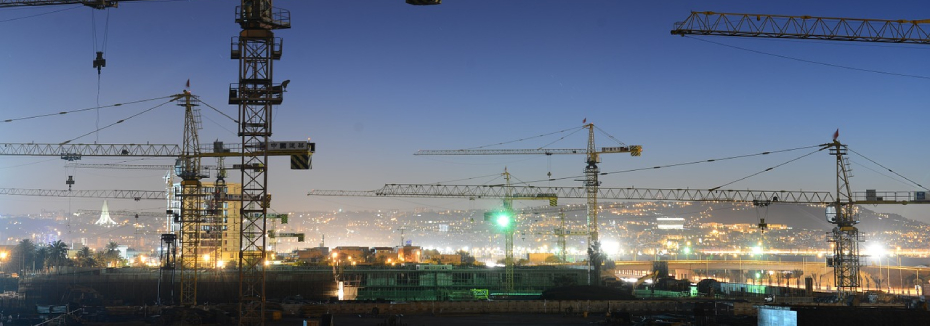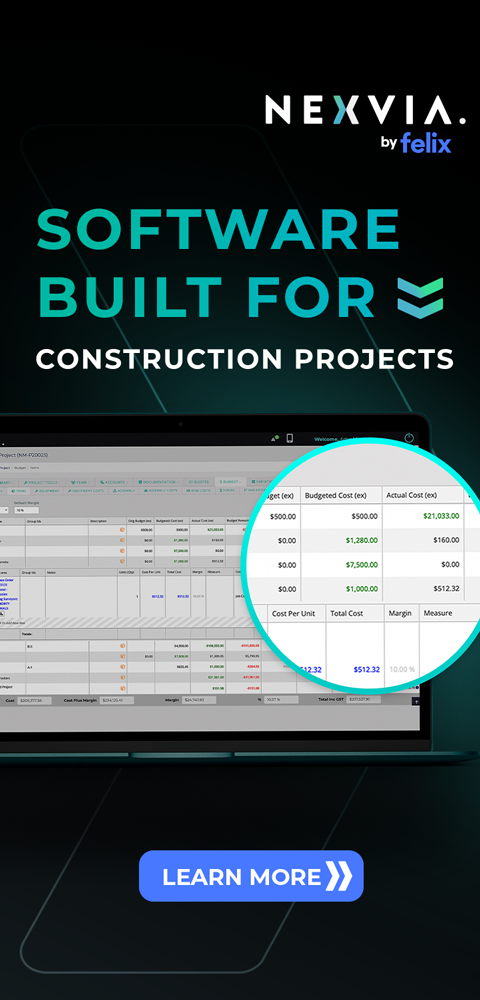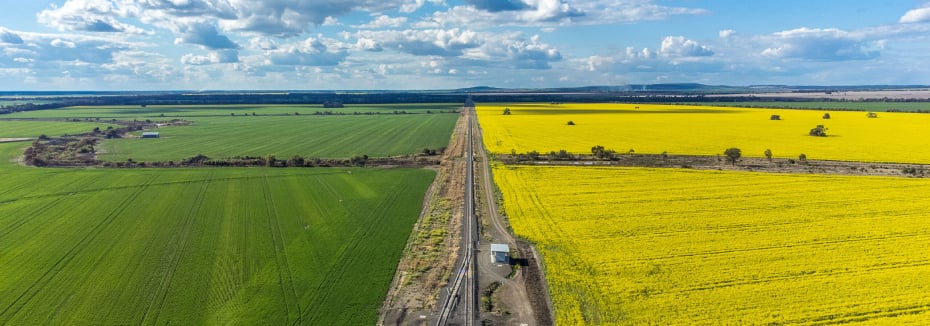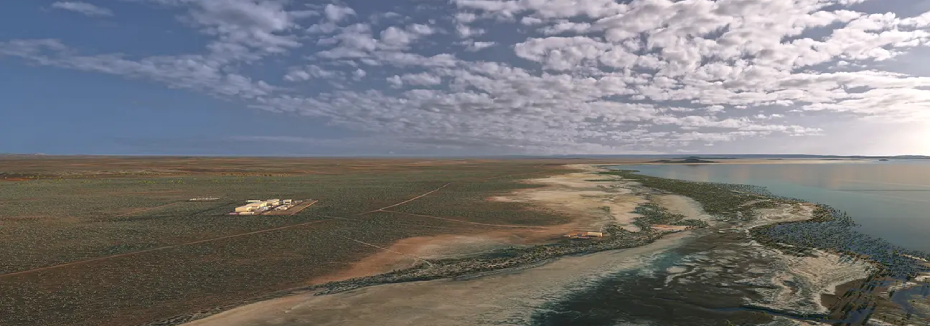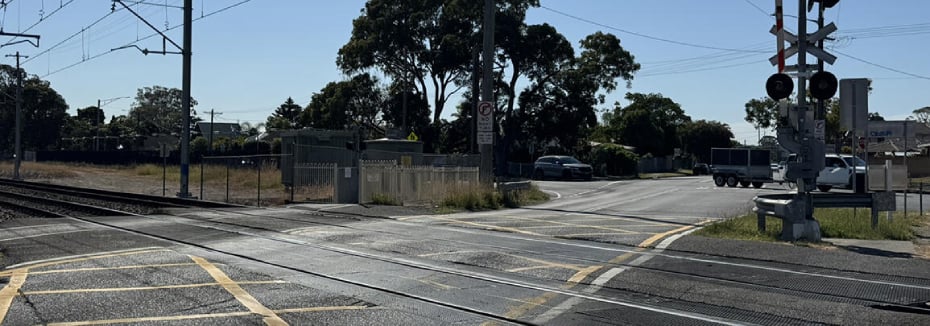As Australia continues to recover from the recent COVID-19 pandemic, more and more construction activities are ramping up across the nation.
And with this increase in infrastructure projects, Australians will start seeing the skyline being peppered with tall cranes working night and day.
But just like other construction equipment, crane hire rates are affected by several factors, and it is not a one-size-fits-all thing.
Based on research and insights from experts within the Felix team, we have gathered the different factors that will affect the rates of cranes for hire.
Factors that affect crane hire rates
- Project scale and site
- Crane size and type
- Wet hire vs Dry hire
- Additional labour requirements
- Hire duration
- Availability in your area
- Maintenance, repair and machine hours
Project scale and site
Before hiring a crane for your construction project, one must determine the scale of the project and the size of the project site. The project site’s overall condition as well as ground conditions will also help in deciding what type of crane is needed for the job.
For example, smaller projects – such as low-rise buildings or houses – that require lighter materials like timber or pallets of bricks will require smaller cranes.
On the other hand, large-scale construction projects which require heavier building materials such as steel beams will need larger cranes that have a higher lift capacity. High-rise building construction will also require taller cranes such as a tower crane.
Crane size and type
Cranes come in different sizes and types, just like other commonly used construction equipment like the excavator.
The size and type of crane you hire will, firstly, depend on the project and the materials you will use.
As mentioned above, smaller projects will usually require smaller cranes whereas large-scale building projects will require larger cranes that are taller and have a heavier lift capacity.
Let us take a look at the different types of cranes that you can hire through the Felix Vendor Marketplace.
- Tower crane – the most common type of crane you will see. This type of crane is fixed on the ground and is usually utilised in the construction of tall buildings or large structures, with the capacity to lift heavy loads. All tower cranes have the same basic parts – base, mast or tower, slewing unit (gear or motor of the crane) that allows it to rotate, jib or arm that is attached to the slewing unit, a shorter machinery arm, and operator’s cab.
- Self-erecting crane – this type of tower crane is ideal for city projects or places where there is restricted space as it has a smaller footprint. The self-erecting crane is usually operated with a remote control, but can also be fitted with an operator’s cab.
- All-terrain crane – in addition to its lifting capacity, this crane can be utilised in all types of terrain and is considered street-legal (meaning it can be legally operated on the streets). The all-terrain crane is also ideal for project locations that often experience weather changes. The all-terrain crane has two engines and could have more than four wheels / tyres.
- Rough terrain crane – can also be referred to as an off-road crane, the rough terrain crane is mounted on a four-wheel undercarriage. This is much lighter compared to the all-terrain crane as it only has one engine to power both the boom and undercarriage. The rough terrain crane’s four-wheel drive and power steering capability make it easier to operate over uneven ground and tighter spaces.
- Crawler crane – just like the conventional excavator, the crawler crane sits on top of tracks instead of tyres. The undercarriage with tracks equally disperses the weight of the crane, making it ideal to be used on project sites that have soft or uneven ground. However, crawler cranes are much heavier and bulkier, and it needs to be taken apart when moving from one site to another.
- Mini crawler / Spider crane – this is a type of crane that is compact and versatile, making it ideal for tight spaces. It sits on a track just like the regular crawler crane but it also features spider-like legs for outriggers that help the crane stabilise on rough terrain or surfaces. The mini crawler or spider crane has a small footprint as well as minimal tail swing, but has the potential to lift heavy loads.
- Franna crane – a popular ‘pick and carry’ crane in Australia. It was designed – by an Australian man named Dave Francis in 1980 – to travel on public roads to transport loads of up to 25 tonnes. With its compact design, the franna crane is ideal for project sites that have limited accessibility.
- City crane – much like the franna crane, the city crane is also ideal for use in project sites that have tight access due to its compact yet versatile design. The city crane is commonly used in construction sites to load gravel, lift materials and even empty waste containers. Also, like the franna crane, the city crane has a lift capacity of up to 25 tonnes.
- Hydraulic truck crane – this heavy-duty equipment features an internal hydraulic system that helps it lift and hoist heavy loads. The hydraulic truck crane runs on wheels or tyres, giving it better mobility on the project site. Its hydraulic system works by using pressurized fluids that generate lift power needed to pick up heavy loads.
- Jib crane – this is a type of overhead lifting device that is primarily used in small spaces such as warehouses or inside buildings for repetitive lifting tasks. The jib crane has the capacity to lift loads up to 15 tonnes. Due to its design, the jib crane is ideal for use in production or manufacturing as it helps improve productivity, minimise injuries in the workplace and enhance safety.
- Lattice boom crane – this type of crane has a V or W shaped lattice design on its boom or arm which helps decrease the equipment’s weight while still providing maximum support when lifting heavy loads. The main parts of a lattice boom crane are its cab, hoist, sheaves and wire ropes. This crane is ideal for the construction of tall buildings due to its mobility, stability and longer boom that has a higher reach.
- Luffing crane – this type of crane is usually seen in cities or urban areas where there is limited space. The luffing crane is recognised by its angled jib that can move up and down in different angles.
- Truck / HIAB crane - this type of crane is mounted on a heavy, modified truck. The truck / HIAB crane is commonly used in the transport industry for unloading and loading of freight as well as in the construction industry to move materials around the work site. An advantage of using this type of crane is that you can lift materials on-site and transport them to another site with the same equipment.
| Category Crane size / type |
Average Hire Rate $ |
| 11 - 20 Tonne All Terrain / Rough Terrain | 165 (wet hire, hourly) |
| 21 - 30 Tonne All Terrain / Rough Terrain | 201 (wet hire, hourly) |
| 31 - 40 Tonne All Terrain / Rough Terrain | 235 (wet hire, hourly) |
| 41 - 50 Tonne All Terrain / Rough Terrain | 270 (wet hire, hourly) |
| 51 - 60 Tonne All Terrain / Rough Terrain | 283 (wet hire, hourly) |
| 61 - 70 Tonne All Terrain / Rough Terrain | 340 (wet hire, hourly) |
| 71 - 80 Tonne All Terrain / Rough Terrain | 369 (wet hire, hourly) |
| 81 - 90 Tonne All Terrain / Rough Terrain | 380 (wet hire, hourly) |
| 91 - 100 Tonne All Terrain / Rough Terrain | 415 (wet hire, hourly) |
| 101 - 150 Tonne All Terrain / Rough Terrain | 524 (wet hire, hourly) |
| 201 - 300 Tonne All Terrain / Rough Terrain | 737 (wet hire, hourly) |
| 0 - 15 Tonne Franna Crane | 186 (wet hire, hourly) |
| 16 - 20 Tonne Franna Crane | 259 (wet hire, hourly) |
| 21 - 25 Tonne Franna Crane | 195 (wet hire, hourly) |
| 26+ Tonne Franna Crane | 237 (wet hire, hourly) |
| 11 - 50 Tonne Crawler Crane | 272 (wet hire, hourly) |
| 51 - 100 Tonne Crawler Crane | 264 (wet hire, hourly) |
| City Crane | 195 (wet hire, hourly) |
| Hydraulic Truck Crane | 900 (wet hire, hourly) |
| Tower Crane | 4,500 (dry hire, weekly) |
| Truck / HIAB Crane | 120 (wet hire, hourly) |
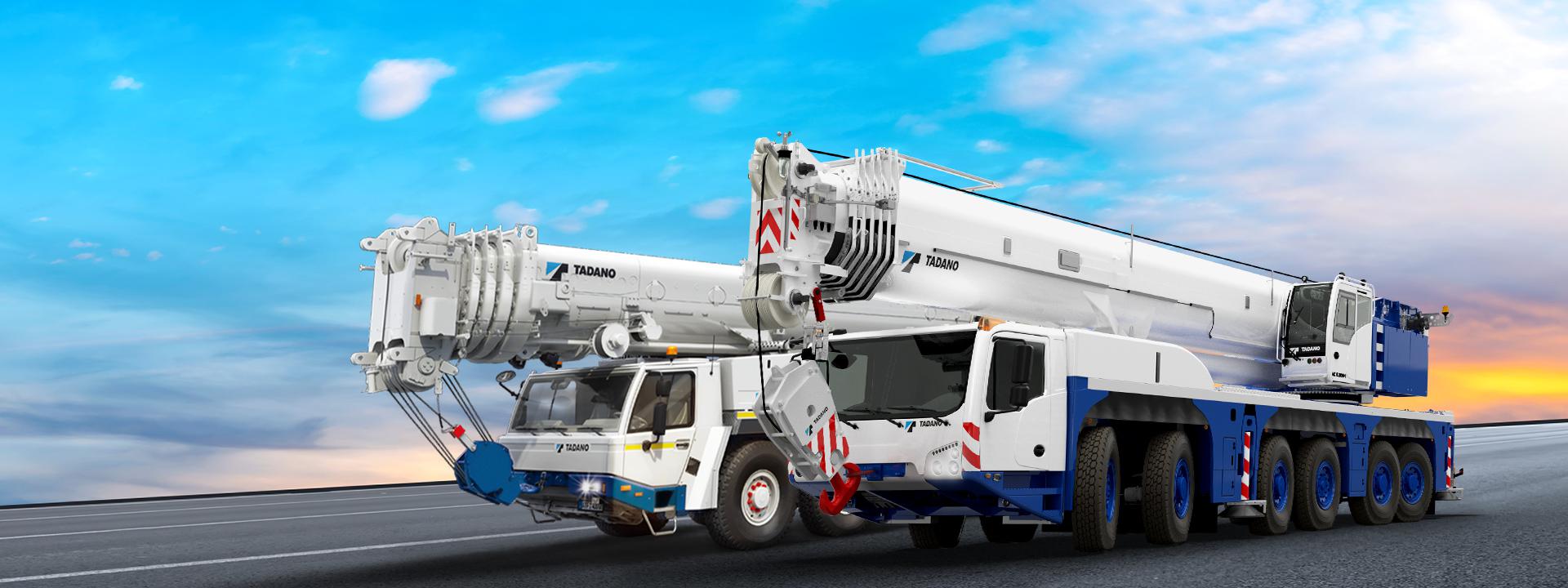 All terrain crane (source: Tadano Global)
All terrain crane (source: Tadano Global)
Wet hire vs Dry hire
When hiring a crane for the job, one must consider if hiring an operator is also needed or not – wet hire or dry hire.
Some cranes are more complicated to operate than others, thus special training and licenses are required. Crane hire companies will usually have the option to hire a crane along with an operator – one that has experience in operating the cranes that you want to hire – but at an added cost.
Of course, if you already have an operator in your employment that has proper experience in operating a crane, you can opt to hire without an operator.
| Category Crane size / type |
Average Wet Hire Rate $ per hour |
Average Dry Hire Rate $ per hour |
| 11 - 20 Tonne All Terrain / Rough Terrain | 173 | 26 |
| 21 - 30 Tonne All Terrain / Rough Terrain | 296 | 32 |
| 31 - 40 Tonne All Terrain / Rough Terrain | 235 | 24 |
| 41 - 50 Tonne All Terrain / Rough Terrain | 270 | 38 |
| 51 - 60 Tonne All Terrain / Rough Terrain | 270 | 42 |
| 61 - 70 Tonne All Terrain / Rough Terrain | 340 | 40 |
| 71 - 80 Tonne All Terrain / Rough Terrain | 366 | 47 |
| 81 - 90 Tonne All Terrain / Rough Terrain | 380 | 41 |
| 91 - 100 Tonne All Terrain / Rough Terrain | 409 | |
| 101 - 150 Tonne All Terrain / Rough Terrain | 529 | 71 |
| 0 - 15 Tonne Franna Crane | 185 | 12 |
| 16 - 20 Tonne Franna Crane | 259 | 19 |
| 21 - 25 Tonne Franna Crane | 195 | 17 |
| 26+ Tonne Franna Crane | 237 | 24 |
| 11 - 50 Tonne Crawler Crane | 272 | 20 |
| 51 - 100 Tonne Crawler Crane | 264 | 42 |
| Truck / HIAB Crane | 120 | 18 |
Additional labour requirements
Other than an operator, hiring a crane will also have other labour requirements such as for the assembly and dismantling of the crane as well as logistics and transportation for mobilisation and demobilisation (mob and demob).
Depending on the type and size of the crane you will hire, transporting the equipment to and from the project site might need expert handling.
Most, if not all, crane hire companies will provide you with options for those labour requirements as well, but it will come at a cost. However, allowing the hire company to handle all the labour requirements for the crane hire will ensure that the machine is handled properly, efficiently and in a timely manner.
The labour options provided by the hire company could include a project manager and an engineer assisting site and logistics planning for the transport and assembly of the crane on the project site as well as the proper and safe operation of the crane.
| Category Crane size / type |
Mobilisation $ total |
Demobilisation $ total |
| 11 - 20 Tonne All Terrain / Rough Terrain | 165 | 165 |
| 21 - 30 Tonne All Terrain / Rough Terrain | 4,805 | 4,805 |
| 31 - 40 Tonne All Terrain / Rough Terrain | 3,262 | 3,262 |
| 41 - 50 Tonne All Terrain / Rough Terrain | 5,368 | 4,755 |
| 51 - 60 Tonne All Terrain / Rough Terrain | 4,500 | 4,500 |
| 71 - 80 Tonne All Terrain / Rough Terrain | 6,628 | 6,593 |
| 81 - 90 Tonne All Terrain / Rough Terrain | 4,765 | 4,765 |
| 91 - 100 Tonne All Terrain / Rough Terrain | 5,642 | 5,642 |
| 101 - 150 Tonne All Terrain / Rough Terrain | 8,643 | 8,643 |
| 201 - 300 Tonne All Terrain / Rough Terrain | 7,600 | 7,600 |
| 0 - 15 Tonne Franna Crane | 2,559 | 2,559 |
| 16 - 20 Tonne Franna Crane | 2,062 | 2,080 |
| 21 - 25 Tonne Franna Crane | 2,566 | 2,592 |
| 11 - 50 Tonne Crawler Crane | 2,866 | 1,166 |
| Truck / HIAB Crane | 981 | 1,079 |
Hire duration
Another factor that will affect the cost of hiring a crane is the hire duration. Will you require the crane for a day, a week, a month or a year?
When requesting a quote, the hire company will provide you with either an hourly, daily, weekly or monthly rate.
In some cases, crane hire companies can give you lower rates if the machine is going to be rented for a long period.
Availability in your area
Similar to goods and services, crane hire rates are also affected by the law of supply and demand. A little refresher, the law of supply and demand explains the economic principle that when a supply of a product or service is higher than the demand, prices will fall. Likewise, when demand exceeds supply, prices will rise.
The supply of cranes in a particular region or state will depend on the number of competitive equipment suppliers and the number of hirers.
In addition, hire rates will differ from one state to another. This means that hiring a crane might be more expensive in New South Wales than in South Australia.
Let’s take a quick look at the table below where we compare hire rates for the different sizes of the franna crane in different states.
| Category Crane size |
State / Territory | Average Hire Rate $ |
| 0 - 15 Tonne | NSW | 245 (wet hire, hourly) |
| QLD | 186 (wet hire, hourly) | |
| VIC | 122 (wet hire, hourly) | |
| 16 - 20 Tonne | NSW | 241 (wet hire, hourly) |
| QLD | 243 (wet hire, hourly) | |
| VIC | 292 (wet hire, hourly) | |
| WA | 4,112 (dry hire, weekly) | |
| SA | 2,800 (dry hire, weekly) | |
| NT | 2,575 (dry hire, weekly) | |
| 21 - 25 Tonne | NSW | 243 (wet hire, hourly) |
| QLD | 193 (wet hire, hourly) | |
| VIC | 231 (wet hire, hourly) | |
| WA | 82 (wet hire, hourly) | |
| SA | 231 (wet hire, hourly) | |
| NT | 186 (wet hire, hourly) |
Maintenance, repair and machine hours
Other factors that affect crane hire rates include maintenance and repair costs as well as machine hours and depreciation value.
Over time, the crane will need to be repaired or maintained to ensure that the machine is in good working condition. With proper maintenance or repair, the crane can continue working safely and efficiently which, in turn, reduces the risk of accidents, injuries or issues on site.
Ask your crane supplier if they offer maintenance and repair services as well or if they have a preferred service provider to handle any repairs or maintenance work on their cranes.
Equipment that is constantly in use gets wear and tear, which decreases its overall value. This means newer equipment will have a higher rate than older equipment. Cranes that have longer machine hours - the total time the machine has delivered work - will have already depreciated in value, thus the lower hire rate.
When asking for a quote, ask the supplier for a breakdown of the rates provided to you as this might include other charges such as maintenance and repair costs.
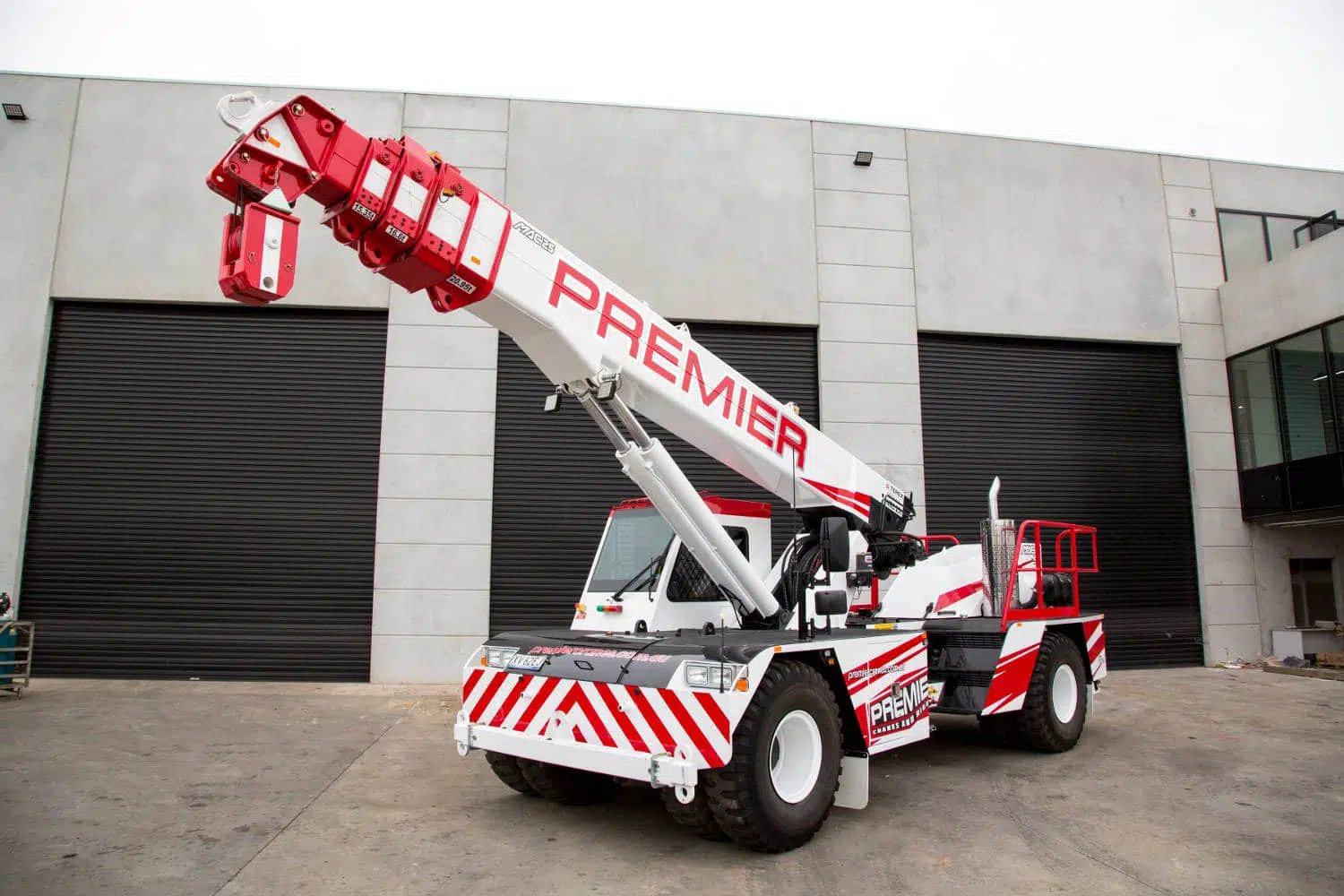 25 tonne franna crane (source: Premier Cranes and Rigging)
25 tonne franna crane (source: Premier Cranes and Rigging)
Tips and tricks to get relevant hire rates
Provide complete information
For suppliers or hire companies to be able to give you the most relevant rates, always make sure that you are providing them with detailed information about your project and your needs when submitting a request for quotes.
With the specific information you have provided, suppliers will be able to gauge fluctuations in rates based on your location and requirements.
The information that you need to provide to hire companies could include project location and timeline.
The project timeline should include the start and end dates of when the crane is going to be used along with possible breaks or construction downtime.
Project delays due to unforeseen events are inevitable and if this happens, make sure you keep the supplier in the loop as hire companies also try to stick to a schedule. Also keep in mind that most, if not all, hire companies have a required minimum number of hours for both wet and dry hire.
Labour specifics
In the previous section, we discussed that hire prices are also affected by labour requirements.
Hiring a crane with or without an operator as well as other labour requirements – such as people to handle transport and logistics, assembly and dismantling of the crane, and engineers to assist with the operation of the crane – could all affect the rates.
When asking for a quote, specify the labour requirements you need so the supplier can include them in the price breakdown.
Indicate additional requirements
Another important thing to note is to indicate any additional requirements you may need when sending in a quote request. This will help prevent any misunderstanding or surprises once you receive an invoice from the supplier as some fees or charges might not be included in the initial quote.
Additional requirements may include, but not limited to, fuel charges, maintenance cost, transportation/delivery/mobilisation or demobilisation fees and specific equipment features or attachments.
Disclaimer: The hire rates data found in this post is a snapshot of the market and does not guarantee the same rates at present. For the most up to date crane hire rates, it is best to submit a quote request.
Being able to acquire the most accurate and relevant hire rates from suppliers will make the procurement process for any project a breeze and the Felix Vendor Marketplace can help.
Felix Vendor Marketplace lists thousands of equipment suppliers and subcontractors across Australia. The platform will not only allow you to request for quotes from equipment suppliers or subcontractors near you, but also allow you to compare quotes from several vendors, giving you the choice which equipment or service to hire depending on your specifications and budget.
Our team aims to provide our readers and clients with industry knowledge that will be able to help them get relevant quotes for plant and equipment hire or subcontractor services. If you find this article helpful, please do subscribe to our blog for the latest project news and industry insights.

Recent Articles
NSW Govt approves Inland Rail Narrabri to North Star Phase 2 project
Delivery of the second phase of Inland Rail in New South Wales will soon get underway as the State Government gives the green light to the Narrabri to North Star Phase 2 project.
New significant milestones reached on proposed Northern Water Project
Two significant milestones have been achieved on the proposed Northern Water desalination plant in South Australia.
Plans unveiled for major upgrade to NSW Rawson Rd level crossing
The New South Wales Government has unveiled plans for a major upgrade at Rawson Road and Railway Street in Woy Woy to make one of the Central Coast’s level crossings safer.
Get the latest project news
- updates on Australia's pipeline of state and federal projects
- fresh contract awards from major contractors and builders
If you're looking to contact us about other matters, please contact us.
